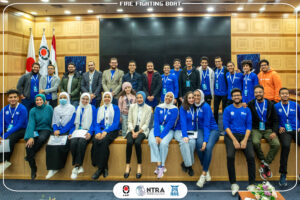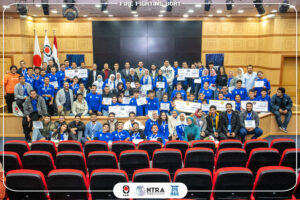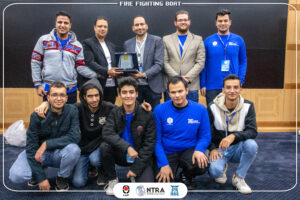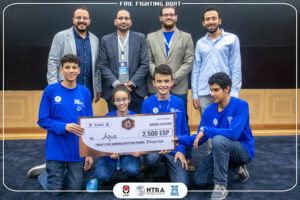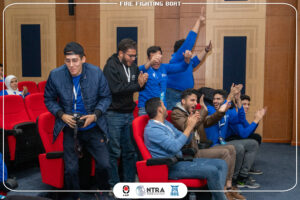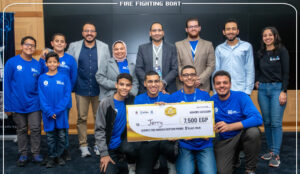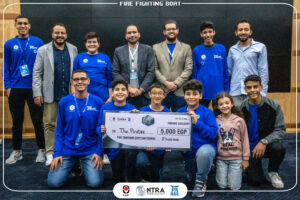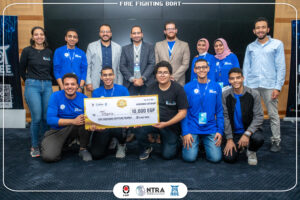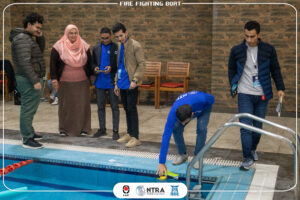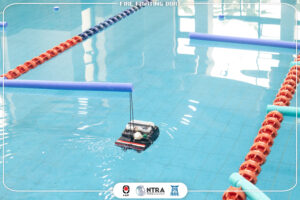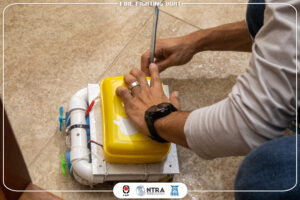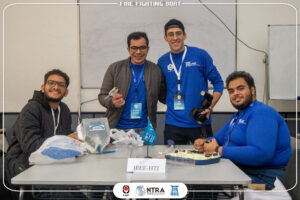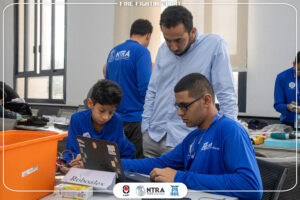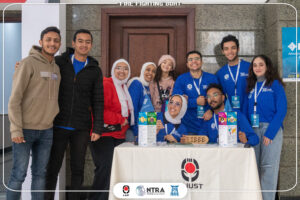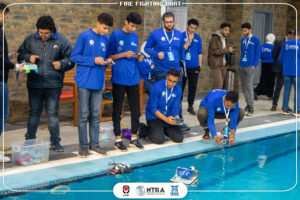FireFighting Boats Robotics Competition
The IEEE EJUST Student Branch organized a competition for a firefighting boat, targeting skilled youth of various ages. This event demanded immense effort from the participants as they had to design and build a functional boat capable of extinguishing fires efficiently. The competition aimed to foster innovation and problem-solving skills among the young generation, encouraging them to tackle real-world challenges in the robotics and control field.IEEE had an immense support from multiple sponsors such as NTRA, Cintech, EJUST and other leading companies in the field of firefighting technology. These sponsors provided financial support and technical expertise to ensure the success of the competition. Their involvement not only added prestige to the event but also allowed participants to gain valuable insights and guidance from industry professionals. The support from these sponsors further emphasized the significance of the competition in promoting advancements in fire safety and encouraging young minds to contribute to this critical field. The fire fighting boat competition was a thrilling and rewarding experience that tested engineering and creativity skills. Participants joined a community of passionate and innovative people who shared their interest in building and controlling their own devices. The contest challenged participants to design, build, and control a wireless boat that could perform various tasks in a pool.
What was the fire fighting boat competition?
The fire fighting boat competition was a two-round event that simulated a real-life scenario of a boat that needed to navigate through obstacles and extinguish fires. The participants were required to create a boat that met certain specifications and rules, and then control it remotely to complete the mission within five minutes. The mission consisted of two parts:
– Round 1: Reaching the place of fire and overcoming obstacles in the pool.
– Round 2: Extinguishing the fire.
The boat had to return to the starting point after completing the mission.
What were the specifications and rules for the boat?
The boat had specific specifications and rules to follow. It could not exceed 25 cm in length, width, or depth below the water level. It could have any shape and height, but it had to weigh less than 3 kg. The boat could use a maximum of two water pumps and a 12-volt battery. The hose should not have been longer than 5 cm. The electrical circuit had to be sealed to prevent water damage. The boat had to be controlled wirelessly using a remote controller, a cell phone, or any other device.
How is the scoring system?
The scoring system was based on the performance and features of the boat. The boat started with 300 points and lost one point for each second that passed. Extinguishing a fire spot added 100 points to the score. Hitting the borders or obstacles, splashing water on the other team’s robot, or troubleshooting the boat deducted points from the score. Using a remote controller made by the participant or completing a social media task increased the score. The judges ranked the boats that did not complete the mission based on how far they sailed.
Why should you join the fire fighting boat competition?
The fire fighting boat competition was a fun and educational way to learn about engineering, electronics, and programming. It was also a great opportunity to develop teamwork, problem-solving, and innovation skills. The participants had to work together to design, build, test, and improve their boats, as well as to strategize how to complete the mission in the most efficient way. They also had to face various challenges and difficulties along the way, such as technical issues, unexpected situations, or competing teams. The competition encouraged them to think creatively and find solutions to overcome these obstacles.
The fire fighting boat competition was also a chance to join a community of passionate and innovative people who shared an interest in building and controlling their own devices. Participants were able to meet other participants, exchange ideas, learn from each other, and make new friends. They were also able to showcase their skills and creativity to a wider audience, as well as to receive feedback and recognition from experts and judges.

